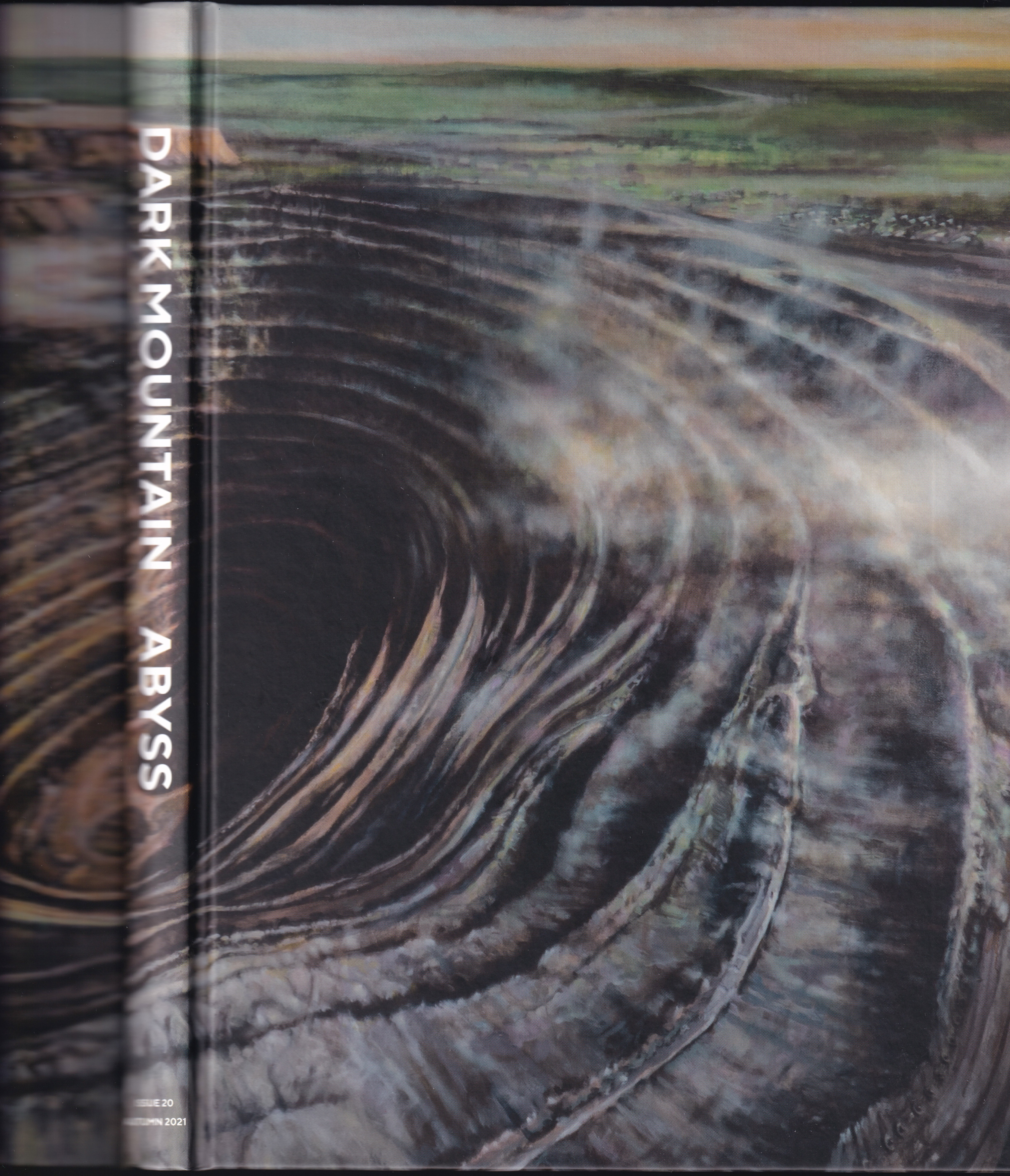
Image: Dark Mountain 20: ABYSS cover
(un)like death warmed up
Prose piece written in summer 2021 for an open call by Dark Mountain for their 20th anthology – ABYSS – on the theme of plunder. (un)like death meditates on deep time, climate breakdown, econimic and geological instability, and the emotional fallout of 21st Century capitalism through the body of Dogor: a small puppy excavated from melting permafrost in Siberia, in 2018. Dogor may be the oldest dog specimen known to humankind so far, or he may be an animal somewhere between a wolf evolving into a modern dog.
Extracts:
The small creature lies very close to the camera. I see him at a three-quarter angle, his head made large and detailed. There are leathery wrinkles on a black nose, and tiny pale hairs that mark themselves out against the dark lines surrounding a closed eye. The slight fuzz above the creature’s nose is translucent, catching a glow. His whiskers oscillate between black and highlight, his claws shine, and his front paw is placed under a folded leg, as if, on waking, he could stand up. He seems like a stuffed animal in both senses: halfway between toy and taxidermy. An ear appears damaged, with curving, fuzzy lines like the gridded stuffing inside a teddy bear. One back leg folds out at a strange angle, betraying lifelessness. His brow is folded, as if furrowed in worrisome dreams.
This puppy is 18,000 years old and is, perhaps, the oldest dog ever found. Dug, unusually intact, from a lump of mud in Yakutsk, Siberia, he is an unlikely being who looks as small and tender as any sleeping dog. The deepest sleep is a burial in still, cold earth. The puppy was born and died at least 8.000 years before humans first selected and named a breed of dog – before any dog could, then, be considered ‘mixed’. With a face more like a baby bear, I don’t recognise him as dog-like until the day I see a low-slung, stocky mongrel sitting on a towpath looking left and right, ears pitching back and forth at small invisible sounds. She has a square jaw and strong paws, her fur dark and brindled all through.
...
I only found the puppy because I had googled the word ‘prehistoric’ to double check the definition – the written word marking the start of history as storytelling. If writing began somewhere, did it trigger the start of the whole world’s history? Had images and objects not already been made to capture stories, too? A slip of a key from web to image search. Rich tiles blossomed automatically, a mosaic of green, brown, red and yellow; whole high-oxygen eras are toned in camouflage.
Prehistory looks like giant ferns and enormous insects, dinosaur footprints and the ghosts of hands dusted ochre on cave walls. Hominids dressed irregularly in furs and crouched around fires. Snow-capped mountains marking scale and distance neatly in each scene. Blood and teeth and jaws and the chase, the eaters and the eaten, the lush and the harsh and the sharp and the seeping. New, in the terms of time, is the grass which covers the plains to a glacier, dripping or forming. Prehistory is a highly proficient coloured pencil drawing, or a 3D computer model of a great beast that can be turned 360 degrees in empty space. Prehistory is mostly bearded men with bare shoulders and yes, women did hunt and no, cave paintings aren’t crude.
...
The puppy, which must have died just before the freeze set in, was interred by a contraction of seasons. Now, he is disinterred by another contraction, caused not by a shift in the orbit and axis of the earth but by the gutting and glutting of its surface. In melting at all, even for a week before refreezing, permafrost ceases to exist. It passes away like – or as – an era.
As Siberia thaws, fast, the land and human livelihoods woven into it shift like the mudbanks on new rivers. The change is palpable, anxious, seen year on year. There is hollowing, wildfire, gashes torn in once-solid places. In summer, meltwater carves scars into the softening silt, once solid beneath the topsoil.
Sometimes the new channels cut into the preserved bodies of prehistoric creatures, opening them to breakdown, the stench of rotting flesh. Small motorboats scour the banks for clutches of fur and the yellow of bare skeletons and tusks. Yakutsk is not a wealthy place. Stability is pulled first from the coldest places, from under the feet of foresters and trappers. Now, men dig all summer in search of dead mammoths. Now, a life’s savings can be spent renting a firefighters’ hose, barely being able to pay the petrol for the water pump. Some find nothing. YouTube makes it seem slick, simple, an easy win. Some have become millionaires. Some barely scrape a living from hunting the dead. The puppy was found by these men, the mammoth hunters, who seek ‘ice ivory’ to be carved into collections and curiosities. Legally and illegally, mammoth tusk is sent to China, the USA, and a whole world of homes where long teeth become small, pale fragments sent – polished, etched, painted, varnished – to be eaten with, held and beheld. Dozens of tonnes of ancient tusks leave Siberia each year and become something pale, sculpted and gleaming. More cutting away, more carving through.
...